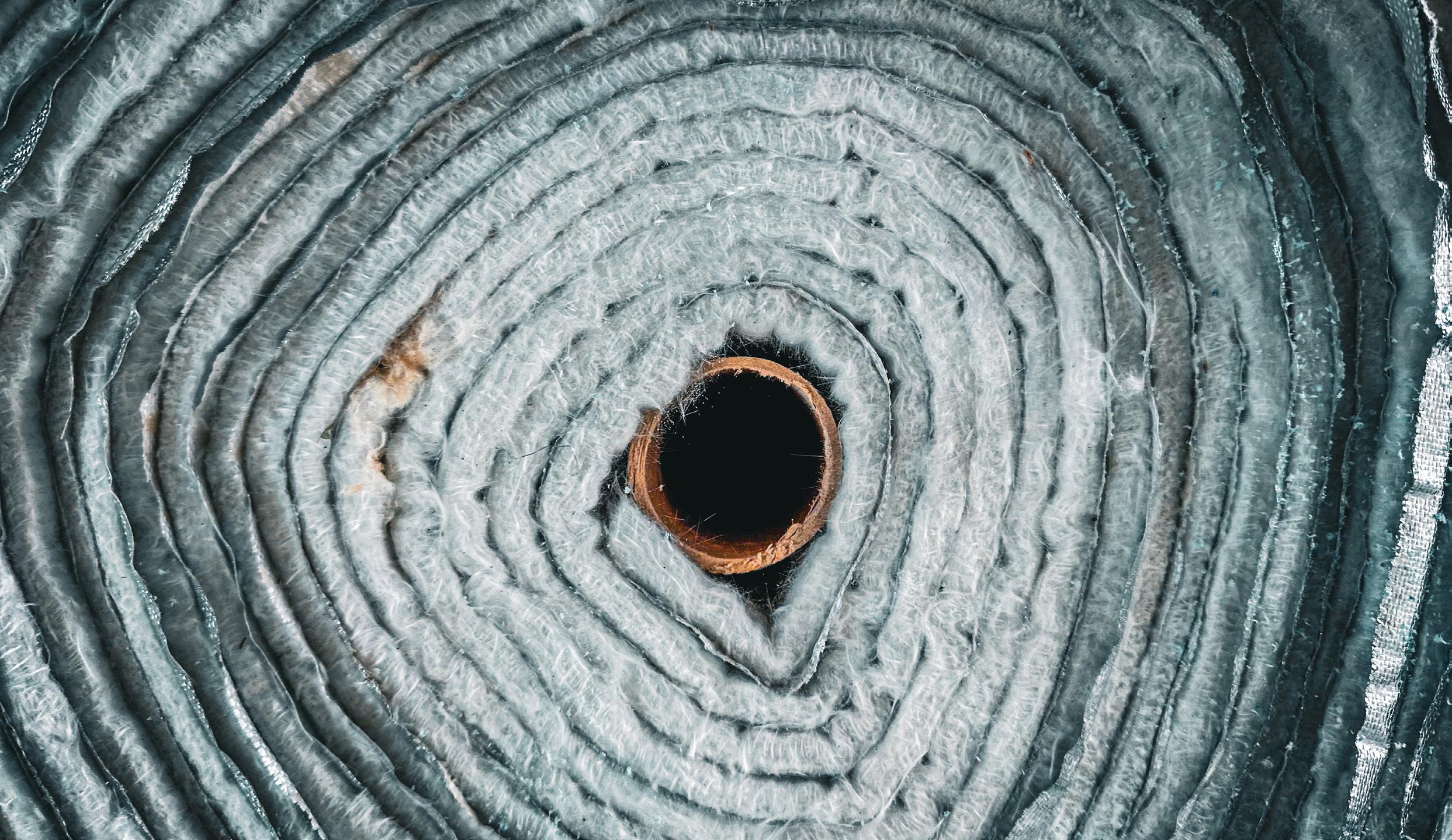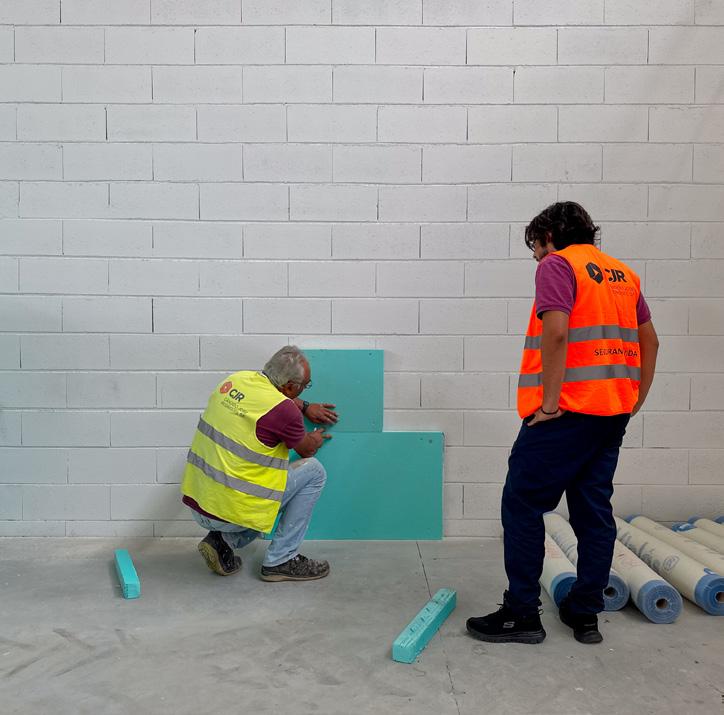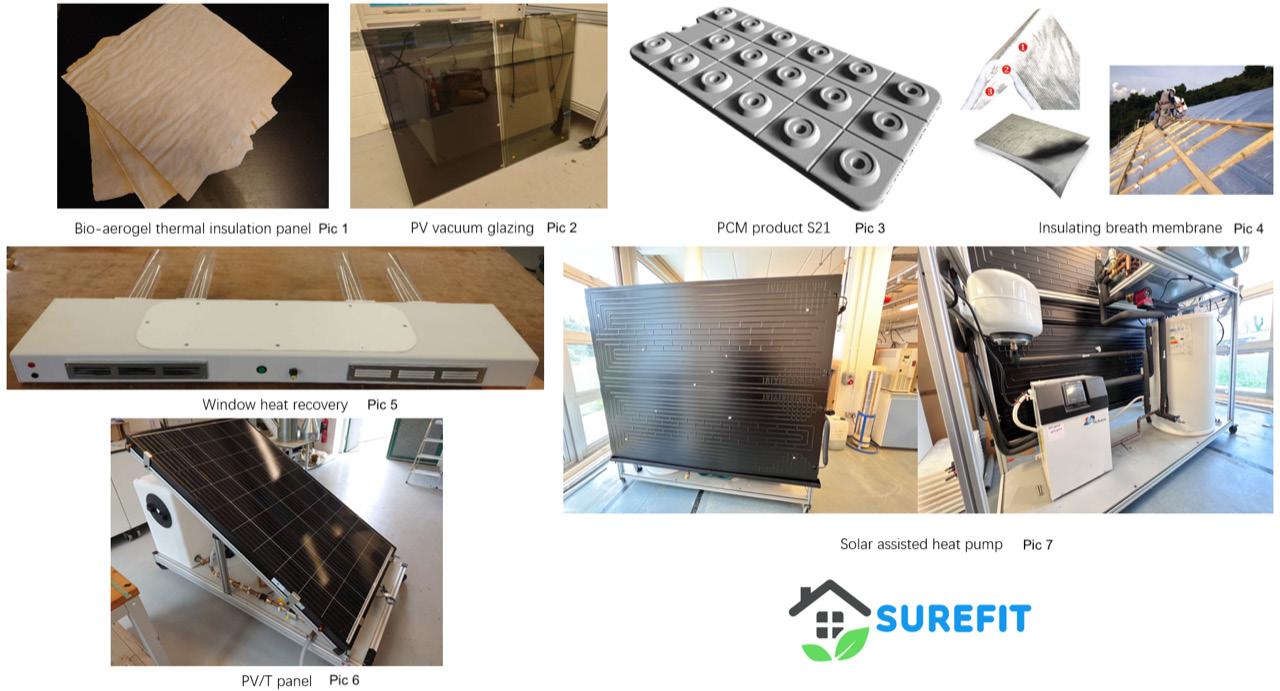

Who We Are Sustainable solutions for affordable retrofit of domestic buildings
BIO-AEROGEL
Bio-aerogel thermal insulation is a novel environmentally friendly insulating material made of starchbased aerogel. It can significantly reduce heating loss through building envelopes when the external walls and roofs of the demo buildings are covered by bio-aerogel thermal insulation, thereby lowering the space heating energy demand. (Pic 1)
This is to reach target of near zero energy consumption through reducing heat losses through the building envelope, and energy consumption by heating, cooling, ventilation and lighting, while increasing the share of renewable energy in buildings. This project has received funding from the European Union’s Horizon 2020 research and innovation program under grant agreement No 894511.
The performance of novel renovation technologies in SUREFIT Project were studied by building level simulations. In the simulations, the technologies were classified into three renovation packages, including a passive package; consisting of bio-aerogel thermal insulation, PV vacuum window, and phase change material (PCM). A ventilation package; comprising insulating breathable membrane and window heat recovery (WHR) and a generation package, including photovoltaic/thermal (PV/T) system, solar assisted heat pump (SAHP) and a new application of daylight technology.

Let us introduce each technology researched:
PV vacuum window is a daylightmanagement device with photovoltaic solar cells embedded in a window. It not only generates a small amount of electricity during the daytime but also decreases heat transfer through windows due to its low U-value. Thus, installing a PV vacuum window means a reduction in purchased electricity consumption and space heating demand of the demo buildings. (Pic 2)
PCM
Phase change material (PCM) is a substance that releases and absorbs sufficient energy at the phase transition between solid and liquid to provide useful heat and cooling. PCM product S27; a salt hydrate, was chosen in the project, which
SUREFIT Project demonstrates fasttrack renovation of existing domestic buildings by integrating innovative, costeffective, and environmentally conscious prefabricated technologies.
“Surefit is the answer of CJR and its consortium partners for a faster, cheaper and less carbon emissions retrofit on domestic buildings”
Miguel
Welcome
changes phase between 18-36. It is utilized as an independent PCM layer installed under the ceiling to absorb excess heat during summer daytime, decreasing maximum indoor temperature, and increasing building thermal mass, reducing space heating energy demand. (Pic 3)
IBM
Insulating breathable membrane is another thermal insulation material, which also improves the building airtightness and decreases the building envelopes’ thermal conductivity. When breathable membrane insulation is installed outside of the external walls and roof, the space heating energy demand is reduced effectively due to the decreased heat loss through the building envelopes and air infiltration. Due to the airtightness improvement in living spaces that are not equipped with mechanical ventilation systems, such as living rooms and bedrooms, the CO2 concentration level can be higher.
(Pic 4)
WHR
Window heat recovery (WHR) is an energy efficient mechanical ventilation measure to solve the indoor air quality issue brought by the insulating breathable membrane. It is installed in windows and consists of fans and heat pipes which transfer heat from exhaust air to supply air. The installation of WHR can guarantee the indoor CO2 concentration level is always lower than 1200 ppm in living spaces. However, it leads to increased heating energy demand to heat the
supply air in the winter, as well as a minor rise in electricity consumption for fans. (Pic 5)
PV/T
Photovoltaic/thermal (PV/T) system converts solar radiation into usable thermal and electrical energy. The system consists of PV-T panels, a hot water tank and a backup heater. The PV/T panel combines photovoltaic solar cells, which converts sunlight into electricity, via a solar thermal collector, which transfers the otherwise unused waste heat from the PV module to a heat transfer fluid. Therefore, the building’s purchased electricity consumption and heating energy demand, decreases after replacing the existing heating system with a PV/T system. The impact of PV/T system on building energy usage is highly dependent on local solar radiation. (Pic 6)

SAHP
Solar assisted heat pump (SAHP) is a heat pump, the evaporator of which is connected to a solar thermal collector via a heat exchanger. The SAHP analyzed in the study is an indirect expansion SAHP system, which covers space heating, DHW heating or both of them in the case of the demo buildings. As it has a much
higher COP for heat production than the existing heating systems, the heating energy demand is reduced significantly after renovation. The solar collector operates more like an ambient heat exchanger than a solar thermal collector, because it also transfers heat from ambient air through the convection. During the time when solar radiation is not available, the SAHP acquires thermal energy from the ambient air. Thus, compared with the PV/T system, the performance of SAHP is less dependent on local solar radiation. (Pic 7)
DT
Daylight technology is using mirror optical louvers with a sophisticated reflection contour which unites two different optics in one louver: I first part of the louver towards the exterior is V-shaped and retro-reflects the direct sun back into the sky to avoid overheating especially in summer. The adjacent part towards the interior forms a lightshelf and guides the diffuse light onto the interior ceiling for better daylight illumination. The advantage of this bifocal optics is an excellent view through in working position of the blinds. Those blinds are integrated in the cavity of a compound window maintenance free, protected from dust and dirt.
These technologies have been installed at a demonstration phase in 5 representative buildings in different European climates.
Editor: Rafaela Martins
Editorial Assistant: Pedro Vilela
Photography: Rafaela Martins
